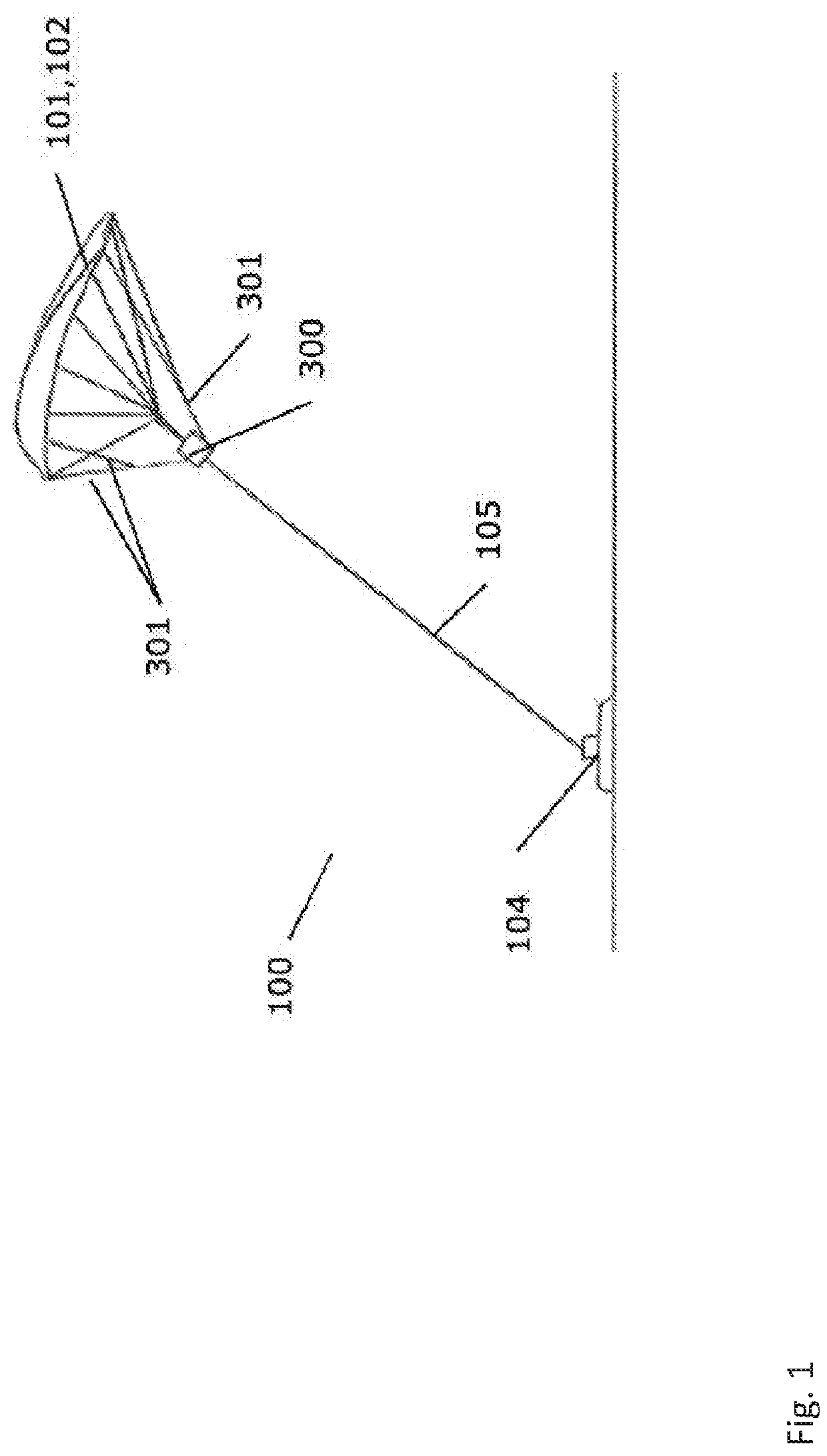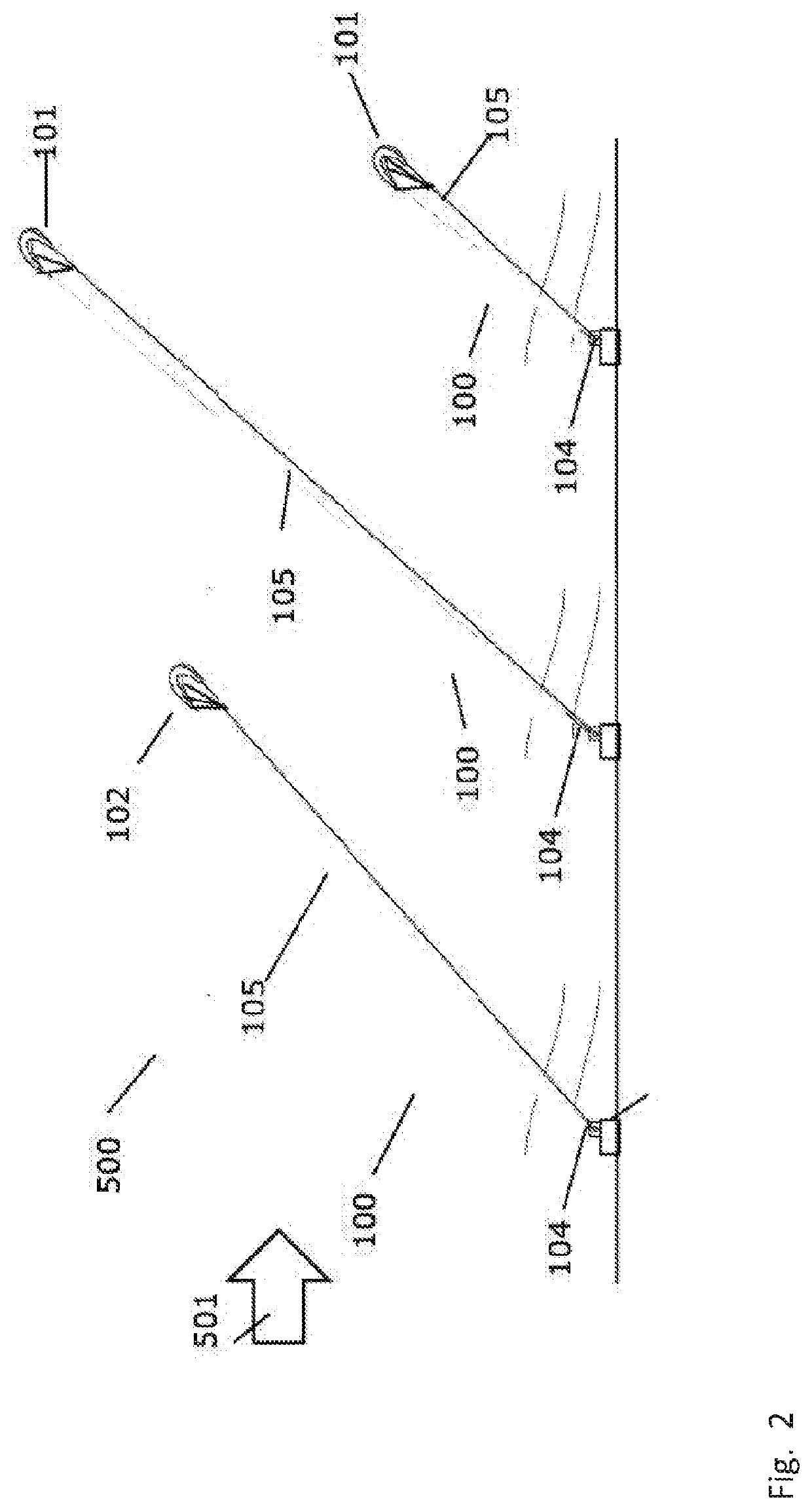Wind energy park with airborne wind energy systems and a direct current (DC) internal grid
- Summary
- Abstract
- Description
- Claims
- Application Information
AI Technical Summary
Benefits of technology
Problems solved by technology
Method used
Image
Examples
Embodiment Construction
[0089]FIG. 1 is a perspective view of an airborne wind energy system 100 for use in a wind energy park an according to embodiments of the invention. The airborne wind energy systems 100 comprises a wind engaging member 101 catching and moved by the wind and connected to a ground station 104 via one or more cables 105. The wind engaging member 101 is in the form of a kite connected to a control unit 300 via steering lines 301 and to a winch system (not shown) in the ground station 104 typically via a single cable 105. The operation of the kite 101 can be fully or partly controlled by the operation of the steering lines 301 by the control unit and in addition to the extraction and retraction of the cable 105 controlled from the winch system.
[0090]The extraction of the cable 105 from the winch system generates mechanical energy which is transferred via the winch system to a generator positioned on the ground station 104. The generator is in turn electrically coupled to a power transmis...
PUM
 Login to View More
Login to View More Abstract
Description
Claims
Application Information
 Login to View More
Login to View More - R&D
- Intellectual Property
- Life Sciences
- Materials
- Tech Scout
- Unparalleled Data Quality
- Higher Quality Content
- 60% Fewer Hallucinations
Browse by: Latest US Patents, China's latest patents, Technical Efficacy Thesaurus, Application Domain, Technology Topic, Popular Technical Reports.
© 2025 PatSnap. All rights reserved.Legal|Privacy policy|Modern Slavery Act Transparency Statement|Sitemap|About US| Contact US: help@patsnap.com



